Table of Contents
Looking after your electric scooter battery is essential as more than half the cost of a scooter is usually down to the battery – so replacing it is expensive, plus, no one wants to lose range over time.
Electric scooters have evolved rapidly over the last 10 years thanks to significant improvements to battery technology.
Looking after your battery therefore is paramount – because, neglect will mean you get less charge cycles & your range per charge will decline much faster, meaning less fun and more headaches.
In the 1990s and into the early-mid 2000s most electric scooters were for kids as the batteries on them just weren’t overly powerful and to make something viable for adults, the batteries would have to be significantly larger – making any electric scooter big, heavy and too slow for any real world use.
Battery technology in scooters has changed with most electric scooters in 2021 using lithium ion or lithium phosphate batteries.
Historically most electric scooters either used NiCAD (nickel cadmium) batteries, NiMH (nickel-metal hydride) or SLA (sealed lead acid) batteries which were far less efficient when it came to power output and power to weight ratio.
Sealed lead acid batteries could be as much as 10kg per battery, and, for some scooters, more than 2-3 batteries were needed – making the scooter MUCH heavier and ultimately slower.
The transition from sealed lead acid batteries to lithium ion batteries begun around 2010 but, it took battery cell technology a few more years to evolve to the point that batteries could put out higher voltages whilst being smaller and lighter.
Fast forward to 2022, electric scooter batteries have never been so powerful – most electric scooters now use either Lithium Ion Batteries or LiFePO4 (lithium ion phosphate) batteries which pound for pound have superior energy storage capabilities over other battery types.
Looking after your electric scooter battery – the first charge
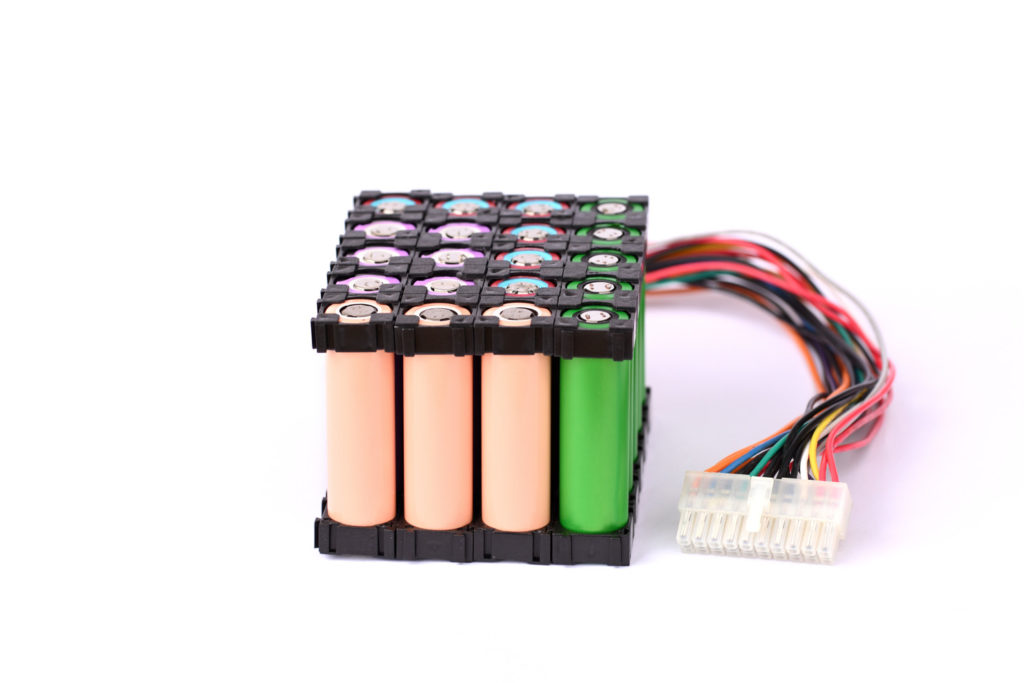
Something overlooked by most people when they get their first electric scooter is the importance of that first charge.
When most electric scooters are delivered, they’ll come with a low or semi-charged battery, so riding it out of the box is a big NO NO.
When you first receive your electric scooter the first thing you should do is consult the manual to find out what charging regime is required. You should then charge your scooter to 100% before using it.
Why do I need to charge it straight out of the box?
Well, the reason behind charging it from new is because of the way lithium batteries work.
When electric scooters are manufactured they will typically contain 18650 lithium cells or 21700 lithium cells which do not like to be stored at full charge for medium/long periods of time.
Lithium batteries are high energy density, however, storing them at full charge stresses the anode and cathode which can cause degradation of the collectors making the battery less efficient and less able to store as much energy.
Because scooter manufacturers have to ship scooters out to distributors, they can often be in storage for months at a time, sometimes more than a year if they sit as stock in a shop or warehouse – this means storing the batteries at full charge and leaving them for so long would negatively impact the batteries life.
So, scooter manufacturers will often charge batteries up to around 70%, this prevents the cells from being stressed but also counteracts issues with storing batteries at too-low a charge.
When you have brought your scooter and you receive it, you’ll see if you turn it on that the charge won’t be full (depending on the indicator you may have for voltage).
Charging it to full before first use helps to prevent cells from discharging in an imbalanced way, it also helps to improve the lifetime performance of the battery as a fresh charge after potentially months of storage will help optimise the battery.
If you ride prior to charging, the chemistry in the battery might not settle as well as if it were charged, this will ultimately impact the cycle efficiency of the battery over time (the memory effect).
Some websites still claim that lithium ion batteries have little to no memory effect, but, thousands of scooter owners who charge their batteries from day 1 of receipt find their batteries tend to perform better over time vs. those who ride straight from the box.
Charging and Discharging Your Battery – How to protect your scooters battery
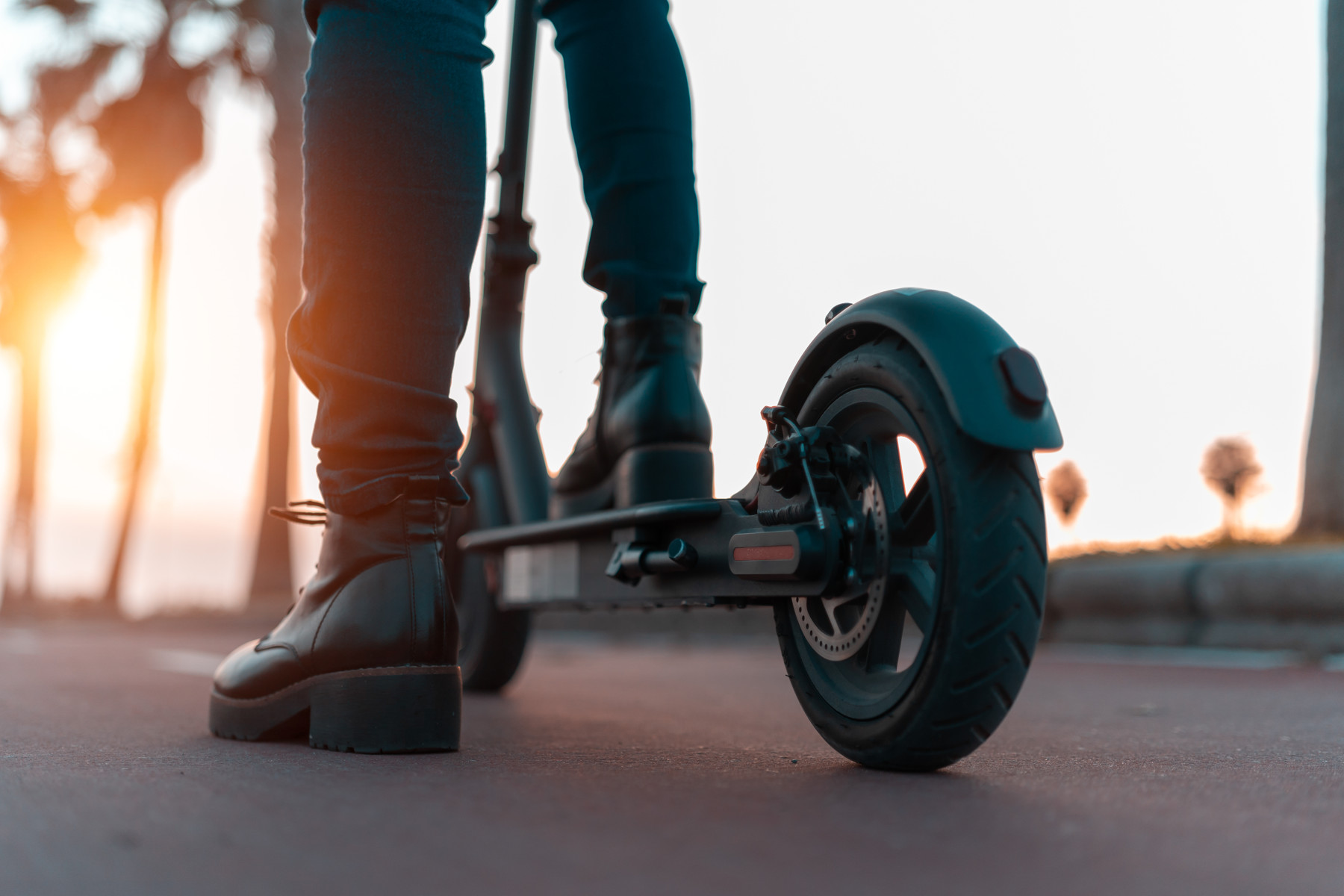
To maximise the life of your scooters battery, here are some important rules for charging and discharging your battery.
Discharging your battery whilst riding
When riding your electric scooter you’ll be actively discharging the battery. Battery SOC (state of charge) is measured in VOLTS (v) – as your battery discharges the voltage will decrease.
On electric scooters a BMS (battery management system) will monitor the voltage output as you ride – when the voltage reaches what’s known as a cut-off voltage, the BMS will cut the power to the scooter to protect the battery from over discharging.
Every scooter has its own battery voltage/battery rating – it’s important to understand what the cut-off voltage is so you don’t end up running out of charge before you arrive at your intended destination.
Some scooters will report their charge through an LCD / Display panel either using a voltage indicator or a gauge / dial or series of LEDS to indicate battery charge.
Cheaper scooters such as the Xiaomi M365s, Gotrax GXL V2, Kugoo ES2 use a basic battery indicator which is a series of LEDS that go down as the battery discharges.
Higher performance scooters will typically come with an LCD panel and a separate voltage indicator panel.
Some scooters may NOT have a battery management system – these are vulnerable to being over-discharged which can ultimately damage the battery.
This means you should observe the voltage until it reaches the lowest allowable voltage before switching your scooter off.
Scooters with a battery management system will automatically protect the battery to prevent being over-discharged.
However, that being said, some scooters can still be switched back on and ridden a little further before cutting off again – this will lead to a state of over-discharging which can destroy the cells in the battery.
Key points:
- Optimise your battery by not riding your scooter until the battery is completely flat – switching your scooter off at 10% charge will improve the life cycle of the battery
- If you ride until your scooter cuts out, do NOT switch it on or attempt to use it anymore
- If you are riding in cold conditions (less than 5 celsius / 40 farenheit) – your lithium ion battery will be up to 30% less efficient, meaning discharge rates will increase
- Try to avoid lots of rides where the battery isn’t depleted enough – i.e. doing rides and returning home with 50%+ battery and charging regularly will also impact battery lifespan
- After a long ride your scooters battery will likely be warm/hot, it’s recommended that you do not charge your scooter immediately but allow a little while for the battery to cool before charging – some battery management systems on scooters will regulate charging based on the batteries temperature – providing a thermal cut out
When riding your scooter, try not to let the battery go down to 0%, switching off at around 10% can improve battery lifecycles.
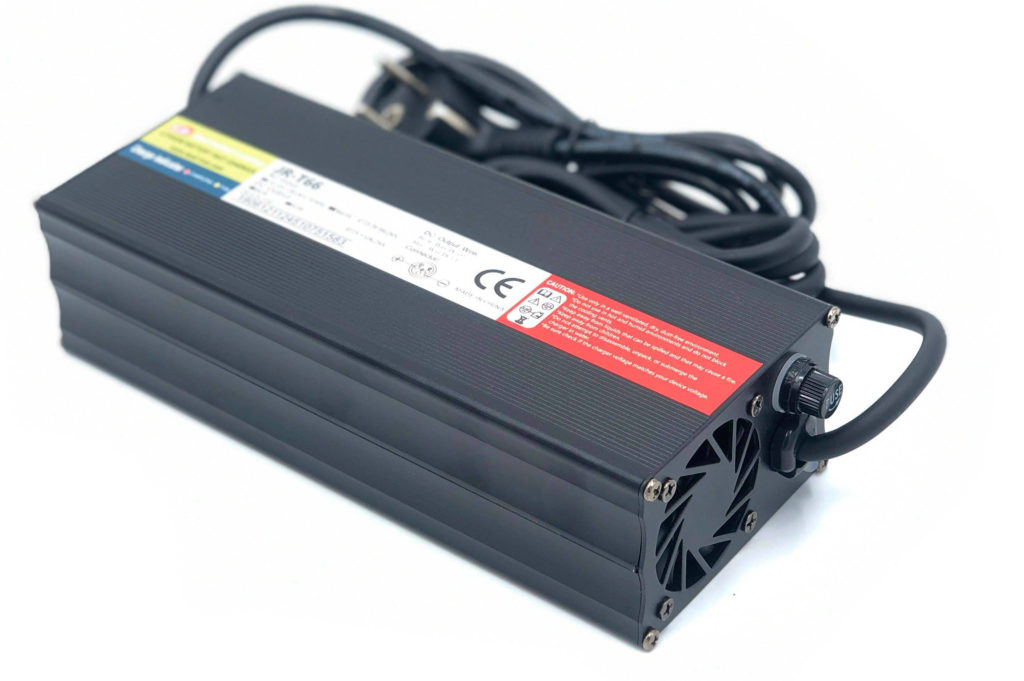
To maximise the life of your scooters battery, here are some important rules for charging and discharging your battery.
Charging your battery after riding
When you’ve been out for a ride – be it an endurance run (driving gently) or a high speed run, the first thing you’ll no doubt do after putting your scooter away is plugging it in to charge ready for the next ride.
Most modern electric scooters have battery management systems that control how the battery is charged and discharged – providing battery protection.
When you’ve put a load (burst) or sustained load on the battery it’ll naturally heat up.
When you come to charge your scooter, it’s likely that the battery will be hot – this makes charging a fire hazard as the heat build up can lead to a thermal runaway – which leads to a lithium fire.
So to counter this, most BMS systems will also monitor the batteries thermal temperature.
When you plug your scooter in to charge after a ride, the BMS will decide whether the battery is ready to take a charge based on the voltage and temperature.
If the BMS detects that your battery temperature is too high, it’ll wait until the temperature has fallen before the charge process starts.
Most people will simply plug their scooter in and will leave it – most will keep their scooters in their garage or shed, some may charge their scooter in the house.
Because most charging phases are unattended, scooter batteries will be charged to 100% capacity before the charger stops the charging process.
However, charging batteries consistently to 100% can reduce the number of cycles the battery is capable of taking through it’s lifetime.
There are some specialist battery chargers for scooters that offer a cut off charging point below 100% allowing riders to get more from their battery over time.
Charging to 90% can improve life cycle performance by as much as 20%.
Key points:
- Optimise your battery by getting a charger that offers a lower cut off charging point – it is crucial that the charger you choose is the same power rating as the original charger – this is measured in VOLT + AMP output
- When charging your scooter try to charge it somewhere that is at room temperature (18 celcius or 64 farenheit). Charging is most efficient when the cells are at a stable room temperature. Charging at sub zero temperatures will stress the battery – as will charging at higher temperatures
- Only use the specified charger with your scooter – this means a charger that is CE marked, is genuine and offers the same voltage / ah output. Charging with a charger that was not designed for your scooter could lead to a fire or irreversible battery damage
- Do not charge your scooter in damp / wet conditions, this could lead to a short circuit / battery fire
The general rule is – the less you stress your battery cells, the longer your scooter battery will last.
Fast Charging vs Slow Charging Your Battery
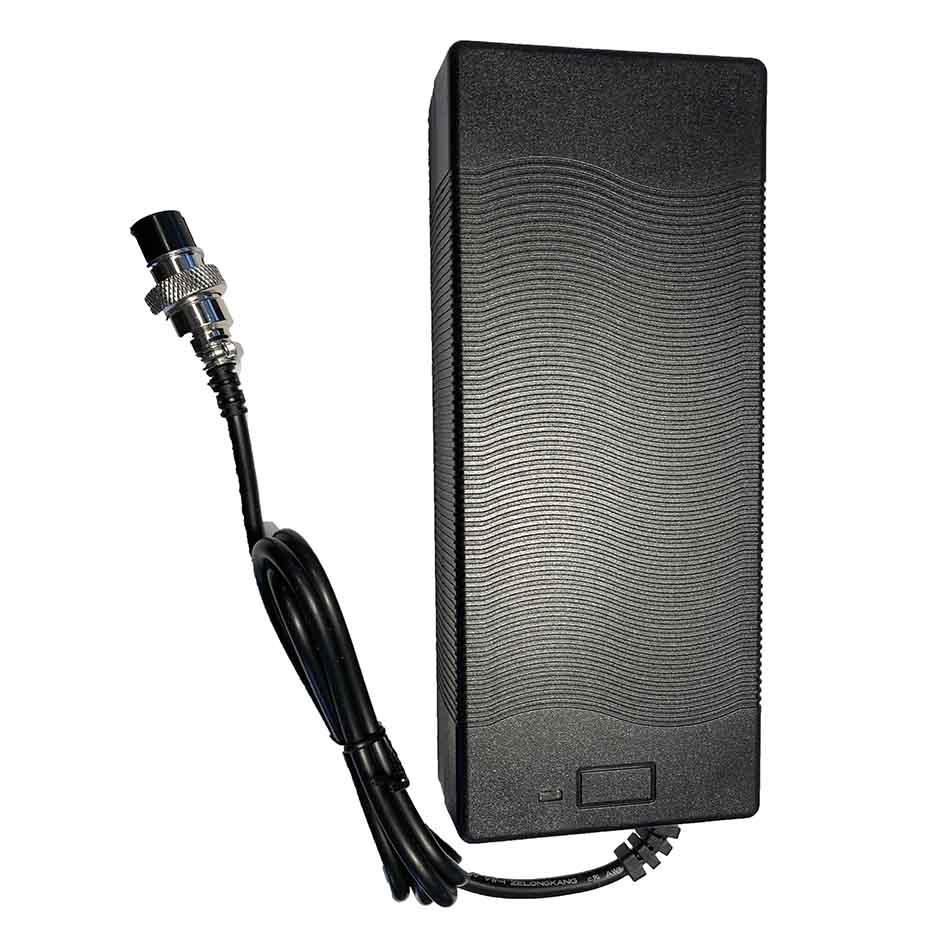
Should you slow charge or fast charge your battery and what are the pros and cons?
Slow Charging Your Battery
When you buy your scooter, you’ll receive a standard charger designed to charge your scooter at the proper voltage / amp rate.
Some scooters come as standard with a slow charger – primarily because it’s cheaper to provide a slow charger and that a slow charger is better for battery health and for maintaining battery health over time.
a slow charger will just be referred to as a charger – fast chargers however are given this connotation to separate them.
The slow charging procedure means the battery is exposed to less current which ultimately places less stress on the anode and cathode as ions are transferred back into the battery.
Slow chargers will typically run between 1 to 2 amps on average where as fast chargers will typically run from 4-8 amps.
Depending on the AH (amp hour) capacity of the battery & the subsequent charger output – this will dictate how long the battery will take to charge.
For example, a 10 amp hour battery (found in most budget scooters) will take around 6 hours to fully charge with a 2 amp charger.
Larger, higher performance scooters as the Dualtron X, Bronco 11 Xtreme or ZERO 11X have much bigger batteries ranging from 30ah to 50ah – these typically come with 2-3 amp chargers which means slow charge times can range from 12 to 18 hours.
Slow charging only becomes a problem for those who like to perform multiple rides in a day or for those who do endurance runs and want to be able to charge quickly at recharge points – at this point slow charging isn’t suitable.
The only real benefit of slow charging is that it will prolong the batteries life and will generate less heat – reducing the risk of fire.
Key points:
- Slow charging your battery is much better for the batteries overall lifecycle performance
- Slow charging generates less heat and reduces the risk of fire
- Slow chargers themselves are under less stress and are likely to last longer than performance fast chargers
- Most slow chargers use passive cooling – meaning they are sealed and do not have any cooling fans – this also extends the life of the charger as opposed to fast chargers which use fans
Slow Charging Your Battery Can Prolong Battery Life & Reduces The Risk of Fire

Fast charging offers some benefit for endurance riders – but for most, fast charging isn’t worth it.
Fast Charging your Battery
Fast Charging is all about convenience.
For riders who like to go for more than 1 ride a day, or like to go for much greater distances, will want to fast charge their battery so stops / gaps between riding are minimised.
The principle of fast charging is simple – increase the amp output to drive more current into the battery – shortening the time taken to fully recharge.
Fast charging can cut charge times by as much as 50% – which is lucrative for those who wish to ride much longer distances.
However, the drawback with fast charging is that it’ll place more stress on the batteries – thus shortening the lifecycle of the battery.
As part of good battery maintenance and to protect your battery – you shouldn’t consistently charge your scooter with a fast charger – instead a fast charger should only be used periodically, a slow charger should be used where possible.
Fast charging tends to be reserved for higher performance scooters.
Scooters with battery capacities exceeding 30ah or 2000wh (watt hours) are most suited for fast charging, anything below 30ah should have a nominal charging time of 6-8 hours – which is the equivalent charge time for a fast charger charging a battery of 30-50ah.
Key points:
- Optimise your batteries life by limiting the use of a fast charger to “only when needed” rather than all the time
- Fast charging will reduce the number of charge cycles your battery will be capable of – some batteries/fast chargers are more capable than others, so the amount of impact is hard to measure
- Most fast chargers will incorporate more ventilation, making them unsuitable for charging in dusty / sandy climates. Fast chargers are also unsuitable for leaving on the floor where dust / dirt could be sucked in
- Ensure when you buy a fast charger that it has a CE mark and that the charger is genuine.
Fast chargers present a greater fire hazard due to the nature of elevated battery current & generation of heat during the charging phase – so it’s of importance that you buy a quality charger with the correct scooter connector & correct voltage/amp output
- NEVER use a fast charger that puts out a voltage/amp amount higher than your scooter batteries rated charging capability
Fast Charging Should Only Be Used Intermittently & Only By Those Who Need It
Understanding Scooter Battery Voltages & Ratings
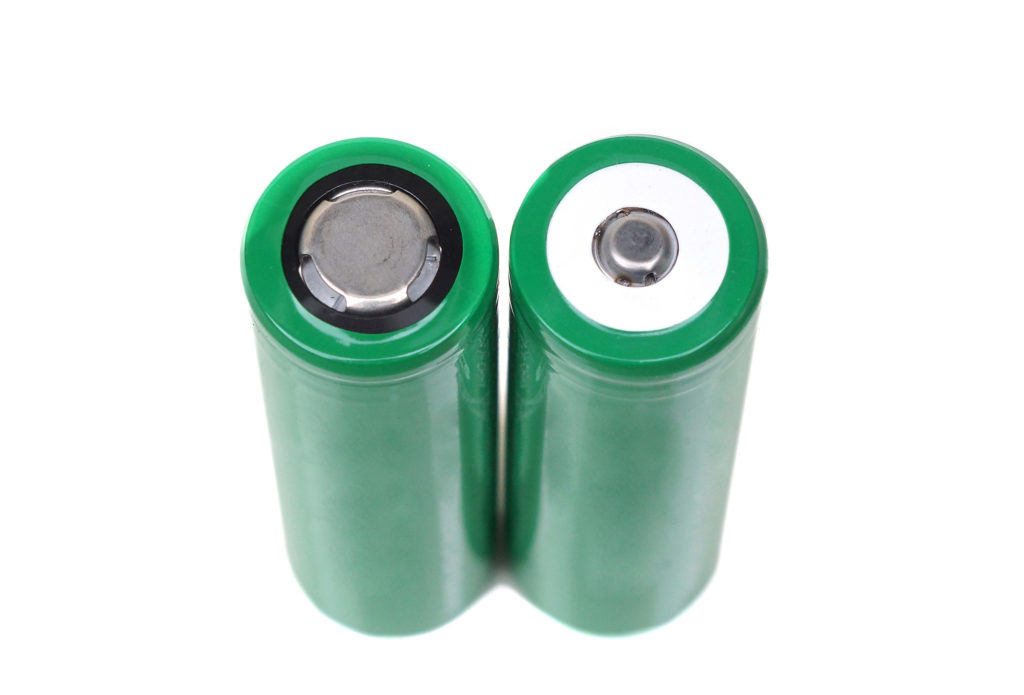
For most, the prospect of understanding the ins and outs of batteries for electric scooters can seem daunting – and for many not of much value, but, any real scooter enthusiast will want to understand scooter capability – that includes battery performance and capacity.
Battery Ratings: What You Need To Know
Buying an electric scooter is often a large investment for many – so it’s essential to buy a scooter that fits your needs.
For most people they’ll want to know how fast & how far their scooter can go – this is dictated by the battery.
Batteries have 2 core values that you need to understand – that’s voltage and capacity.
Higher voltage outputs will make for a faster scooter – voltage is measured in V and for many scooters will range between 24v and 72v.
Higher battery capacity will make for longer scooter endurance when it comes to racking up the miles / kilometers. Battery capacity is usually measured in AH (ampere hours) or WATT hours (WH).
So how do you make sense of these ratings?
Well, you can apply a flat logic to battery performance – and that’s higher capacity, higher voltage batteries will enable higher speeds and longer runs / more endurance.
As a general guide:
In Shot (AH) Stands for AMP Hour or “Ampere Hour”.
(WH) Stands for WATT Hour.
| Scooter Price Range | Prices | Typical Voltages | Typical Battery Capacities | Typical Top Speeds | Typical Real World Distances |
|---|---|---|---|---|---|
| Budget | £100 - £500 ($140 - $700) | 18v-24v | 5-10ah | 8-15 mph (12-24 km/h) | 5-15 miles |
| Medium | £500 - £1000 ($700 - $1400) | 24v-48v | 10-20ah | 25-40 mph (40-64 km/h) | 15-25 miles |
| High | £1000 - £3000 ($1400 - $4200) | 48-60v | 20-35ah | 40-50 mph (64-80km/h) | 25-40 miles |
| Very High | £3000 - £6000 ($4200 - $8500) | 60v-96v | 30-50ah | 50-70 mph (80-110km/h) | 40-60 miles |
So to summarise battery ratings – the VOLTAGE of the battery will correlate with speed – higher voltage systems allow BLDC hub motors to go faster.
So the higher voltage your scooter is rated at – the faster its likely to be.
With battery capacity – you can use either AH or WH – they are just different units. Most scooters are rated by AH (battery capacity). AH x VOLTS = WH.
The larger the battery – the longer it is likely to take – you can use this battery charge time calculator to work out how long it will take to charge your scooter.
Signs of a Worn or Failing Electric Scooter Battery
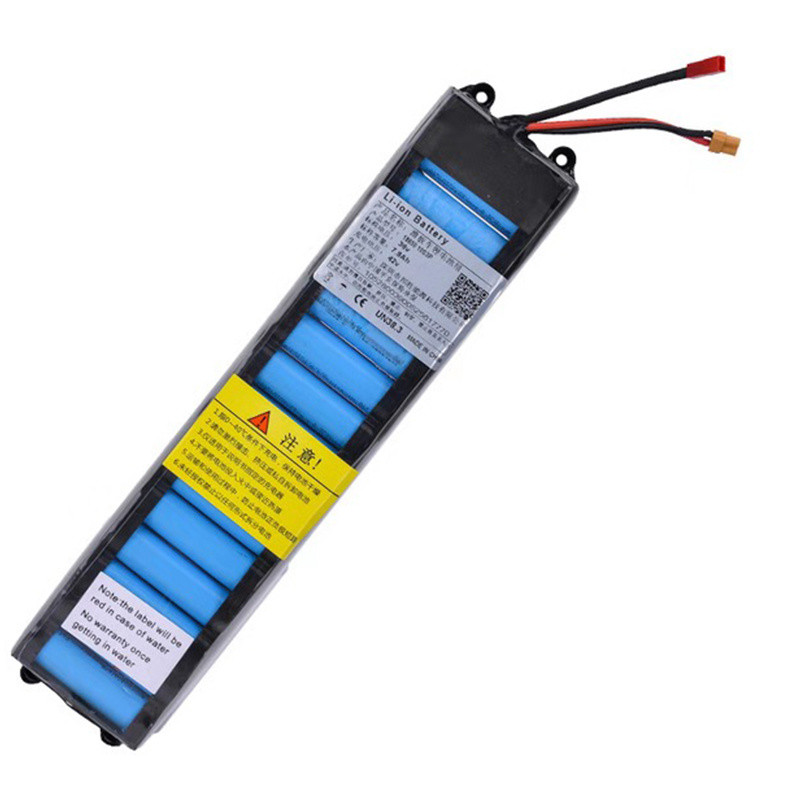
Battery wear and failure is inevitable – nothing lasts forever, lithium batteries included. Your battery pack will deteriorate over time – even if you look after it.
The rate of battery degradation will depend on what kind of life its had i.e. lots of hard discharges and recharges, excessive short charges, over discharging will significantly reduce the batteries life span – where as more gentle discharging (less aggressive riding) proper charge and discharge cycles, 10%-90% battery charge maintenance and good temperature management will significantly INCREASE the batteries life cycle capacity.
How many charge cycles will my electric scooter battery last for?
Well, there are no fixed numbers for this question but on average most LITHIUM battery manufacturers expect a pack to last around 500 cycles before cells begin to deteriorate quickly – to the point where the scooters usability and range is severely compromised.
With good maintenance regimes (battery maintenance) you could see as many as 500-700 battery cycles before the lithium pack will need replacing.
Harsher battery use will reduce cycles to 300-400, but, the rate of deterioration is dependent on so many different factors.
According to the Battery University – battery discharge cycles impact the total number of chargeable cycles depending on sustained and depleted voltages.
Excessive cell voltage depletion shortens the number of cycles a typical lithium battery can take – however these are general rules.
The quality of the cells and type of cells will also dictate cycle performance.
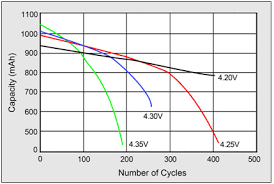
What signs will I get that my electric scooters battery is failing?
Most lithium ION cell deterioration is gradual – so you’ll notice as you own and use your scooter – over time the distance you are able to travel will shorten.
As the battery ages, the cell becomes less efficient at holding charge and therefore the nominal capacity drops. You will get signs starting with:
Key Signs of a failing battery pack:
- Scooter range reduces steadily but usually increases progressively
- Noticeable battery sag – when a battery isn’t flat but the voltage drops temporarily when a heavy load has been applied
- Rapid voltage drops when the battery reaches 30% of less, on rapidly failing batteries, scooter users can experience weird behaviour such as scooter shut off at 20% – because the cells true power output falls significantly whilst the scooter LCD panel / battery indicator might indicate a voltage that correlates with state of charge – the true battery capacity is often depleted due to worn cells
- Charging issues such as excessively slow charging – or, chargers indicating a full charge too early
- BMS shut off when the scooter is under load
If my scooter’s battery is worn out or failed – what can be done?
Most electric scooters are serviceable – meaning it isn’t too hard a job to replace the battery pack.
If the scooter is in warranty – the battery pack might be covered under warranty – so it’s important to check this before opening your scooter. Opening your scooter is likely to invalidate any warranty (if any remains).
Lithium battery packs are, in most cases, easy to replace.
If your battery pack is worn or has failed, you will either need to take your scooter to an electric scooter shop for repair – or, if you have some technical know how, it shouldn’t be too difficult to change the battery yourself.
As long as you source the equivalent battery type, it should be easy to swap out the battery pack.
Most electric scooter battery packs use an XT60 connector which should be included on a replacement battery pack. Some batteries may use other connector types such as MOLEX, Bullet Connectors, Deans/T, Balance connectors etc.

